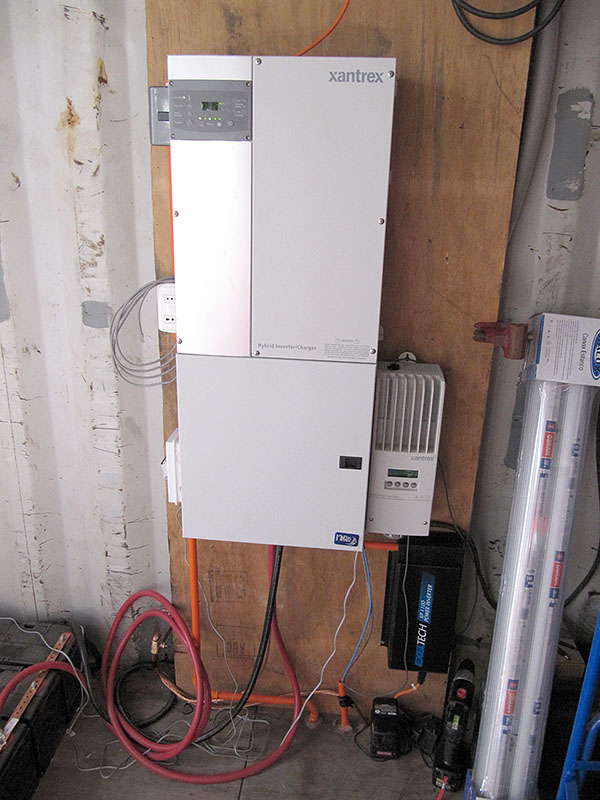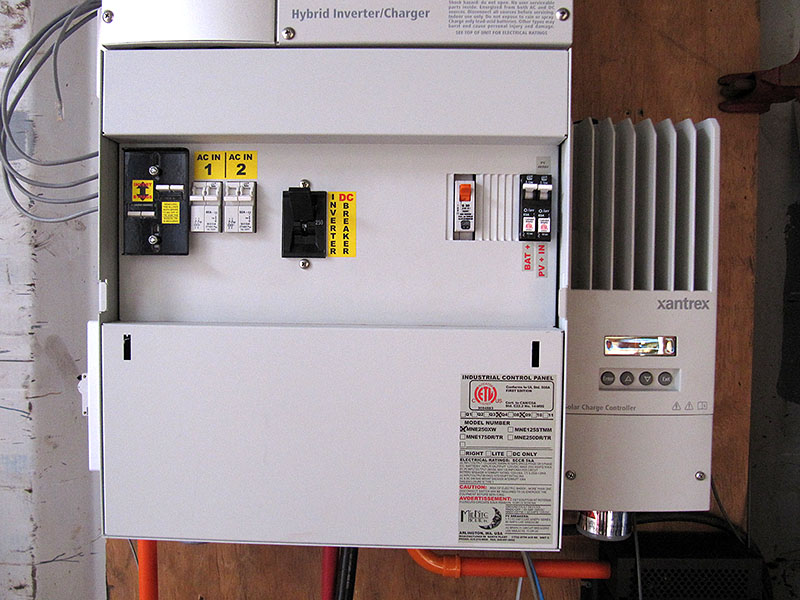Because of the recent topic by tecman and another recent thread, I thought I would show my solar system. Well my system as it existed in 2010. I am currently building a frame for some new panels and my batteries have changed.
When I moved to Chile, it was made clear to me that I would not be able to get a connection the town power. When I was here in 2009 (the experience that made me decide to move here) I was made very aware that the town power was of very poor quality and went off line regularly anyway. So the plan was to be totally off line from the crappy power here and be independent.
The good thing about my location in Chile is that is one of the clearest places in the world. I am also at about 2500m altitude which means that about 1/4 of the atmosphere is below. This is THE ideal place for solar power.
My system was purchased from a US company whilst I was still in Canada and shipped down ahead of me. I did not want to bother with the cost of shipping heavy batteries and the difficulties of dealing with hazardous materials shipping so I decided to get my batteries in Chile. My friend here was also looking to update his solar system so he had found what appeared to be a good deal on batteries here. It was not a good deal but I will provide details later in this post.
My system consists of:
Xantrex XW4548 4500watt inverter charger that outputs 220VAC
This inverter meets all my foreseeable needs for power.

Xantrex MPPT60-150 solar charge controller
This charge controller was chosen because it interfaces with the inverter through a modified version of CANBUS.
Midnite Solar breaker box
This box combines breakers and all the connections needed to make a nice tidy and flexible setup for all the power connections.

Kyocera 205 watt panels x9
This was calculated to give me more than enough power from the sun available here. Calculating panel size versus battery size and energy consumption is not very straightforward. These panels turned out to be enough for all my power needs during the summer but if we have clouds here for a few days, and during winter, they fall behind in keeping my batteries up to charge. My original batteries were to be somewhere between 48V at 500AH to 600AH. I ended up with 750AH worth at this voltage so the panels now fall short during the "dark" times. 7 more panels are being installed. You can never have enough panels! The panels are connected in a 3x3 parallel series connection at this moment through a combiner box that has 3 DC breakers in it. The new setup will be 4x4 with 4 breakers. There are also lightning arrestors in the box.

Xantrex AGS
This is a generator controller. When it was realized that my first bank of batteries were a scam, as is something very common in Chile, I needed a generator to keep up with my energy needs during the nght and this was purchased to help control the generator instead of me needing to run outside all the time to kill the generator when the batteries were full enough to last the night.
Kipor KGE2500X
I needed a generator to make up for the loss of battery capacity because of the dishonest battery reseller in Chile.
Xantrex system control panel and a battery monitor
Here you can see my control panel for the solar system, the battery monitor and the solar hot water controller.

Exeltech 1100watt 120V inverter
I had many tools that I brought with me that were 120V, as it was cheaper to buy an inverter to power these than it was to buy everything again.

20 falsified solar storage batteries
The company we purchased these from went as far as printing fake labels and providing fake charge and specification data sheets for these things. It turned out that they were old new stock relabeled and passed of as fresh stock. They lasted 4 months before dying. I even found the charts he had tried to foist of as proper spec charts by searching on the web. He stole the images from a generic tutorial on how batteries work. Needless to say they weren't for these batteries.

I then paid to have 12 x 250AH batteries from Universal Battery in the US shipped here. They are AGM types and have been running for over a year without any problems. I don't have pictures of the setup as they are covered with some things as I re-arrange my shop.

My work shop when it was clean

My system supports a fridge running full time, a wireless router, 3 notebooks running full time, satellite receiver, 32" HD TV, lights, a network storage device, an electric bed warmer for my girlfriend and I during the winter, my workshop, and a water pump. I also run a desktop quadcore with 2 monitors at times needed. In the morning a coffee maker is run once and a toaster. When needed a 1kW microwave is used to reheat food or other cooking uses. I make tea regularly with my 1400W electric kettle too.
When I want music or movies I have a 1kW 5.1 surround sound system with an additional 300W sub-woofer.
So here, solar power works out very well when you can count on the sun 320 or more days out of the year. The high altitude also helps quite a bit.
I will post more pictures when I get my 7new solar panels installed on the new frame and when I get my workshop clean again.